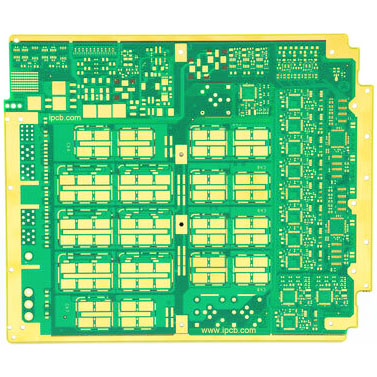A complete signal loop, U1 is the driver; U2 is the receiver; L1, L3 are the package inductance of the UI signal output pin and the ground pin respectively; L2, L4 are the package of the U2 signal output pin and the ground pin respectively inductance. Consider a simple situation. The reference plane of the signal path is the "ground" of the device UI and U2, and the signal pin of the component is not close to the ground pin.

According to the basic electromagnetic law, when there is a current in the loop, magnetic coils will be generated around the signal path and the return path. The magnetic line of force around one path is the magnetic coil (self-magnetic coil) generated by the current in the path. It is composed of two parts: magnetic coil (mutual magnetic coil) generated by other current paths around it. That is to say, the conductor through which the signal current flows has inductance, and its total inductance is composed of two parts: self-inductance and mutual inductance. The directions of the currents in the two paths are opposite, and the directions of the magnetic coils are also opposite. Therefore, the total inductance of a path is the difference between self-inductance and mutual inductance. If the self-inductance of the signal path is LA; the self-inductance of the return path is LB; the mutual inductance between the two is LAB;
If the current in the loop changes, an induced voltage will be generated across all inductors. The voltage generated on the return path is ground bounce, and the ground bounce voltage depends on how fast the current changes.
The ground bounce is the voltage between two points on the return path, which is generated by the rapidly changing current in the loop. The ground bomb has little effect on the drive end, and mainly affects the reception, which is equivalent to the noise superimposed on the received signal. If multiple output gates switch states at the same time, the ground bounce noise will increase several times, that is, synchronous switching noise.
There are only two ways to reduce the ground bounce voltage:
• Minimize the variation of loop current. This means reducing the rate of edge change and limiting the number of signal paths that share the return path;
• Second, reduce the return path inductance as much as possible. Reducing the return path inductance includes two aspects: reducing the self-inductance of the return path and increasing the mutual inductance between the signal path and the return path. Reducing the self-inductance means making the return path as loose as possible: increasing the mutual inductance means making the return path and the signal path as close as possible.
Here are some specific measures:
• Use a multi-layer PCB to lay out the power and ground reference planes, and solder the power pins and ground pins of the components directly on the plane to ensure the lowest power or ground pin inductance and impedance;
• Try to use low switching speed components;
• For components, a ground pin can be added during packaging, a power supply pin can be allocated for the power stage, and a ground reference pin can be allocated for the input circuit;
• Adopt the input method of checking scores;
• Avoid the use of sockets and winding boards;
• Place the decoupling capacitor as close as possible to the ground pin of the component.
Ground bounce is a noise source generated by logic components. Due to the faster and faster signal edge rate and voltage switching speed, ground bounce can sometimes become a serious problem, and more attention should be paid when designing.
The above is the introduction of the ground bomb of high-speed circuit PCB. Ipcb is also provided to PCB manufacturers and PCB manufacturing technology